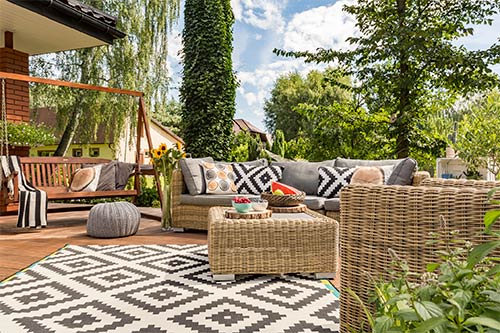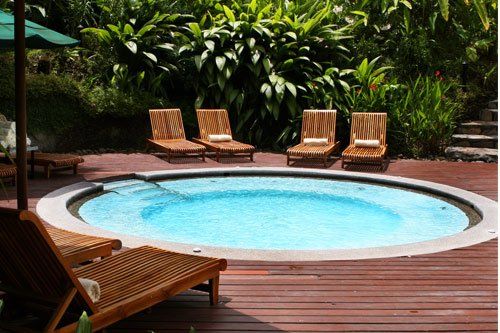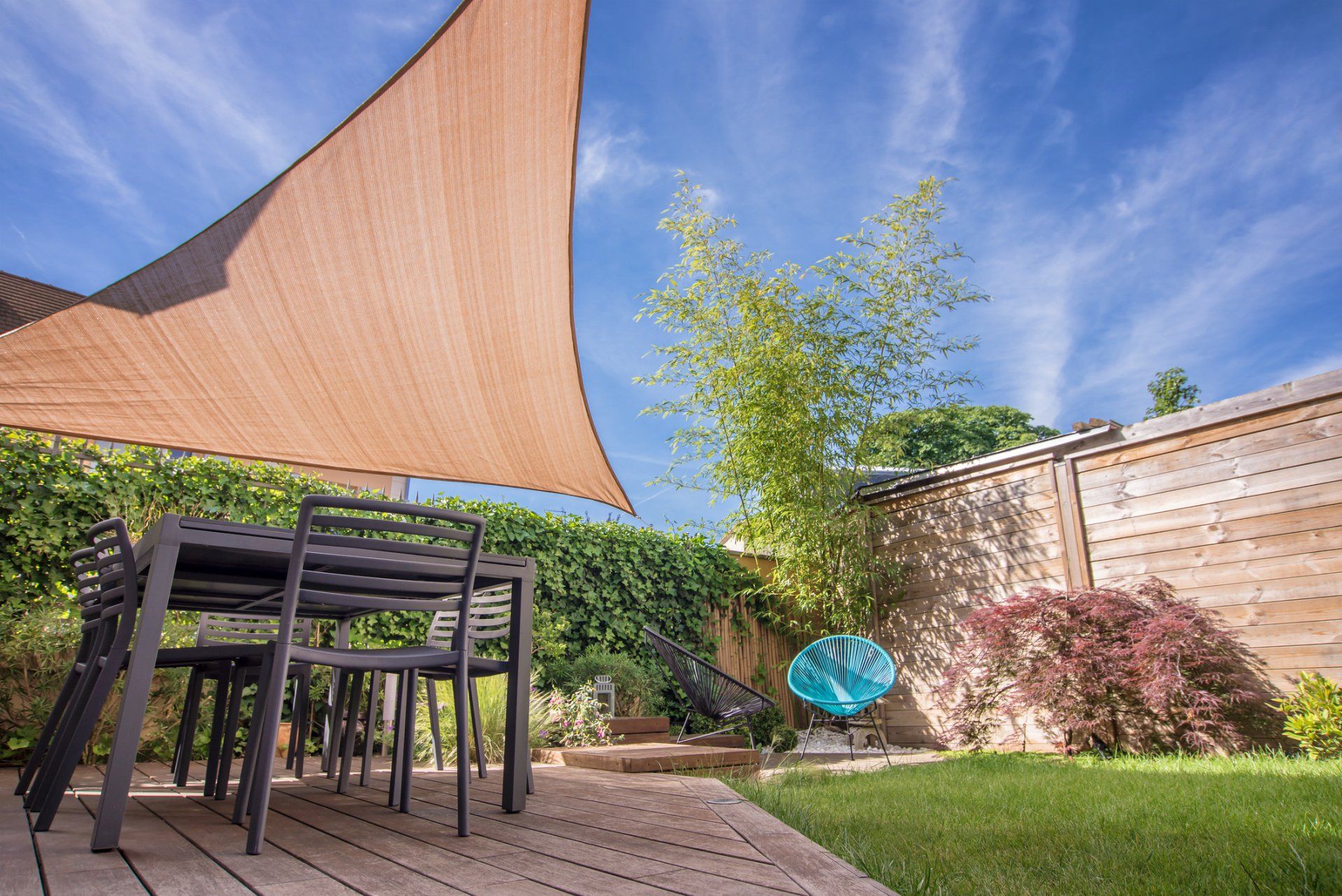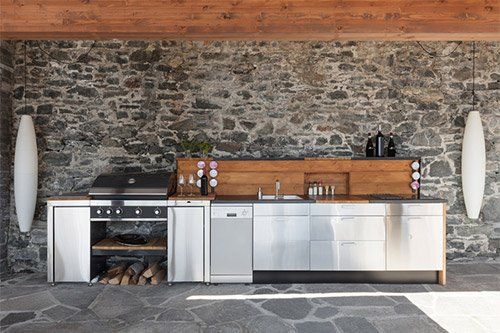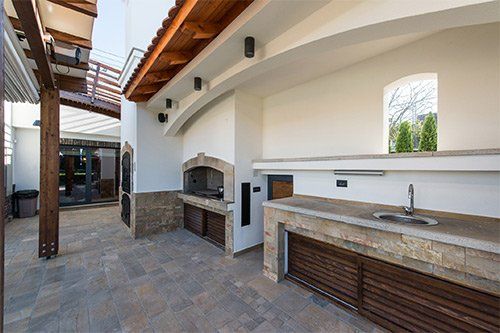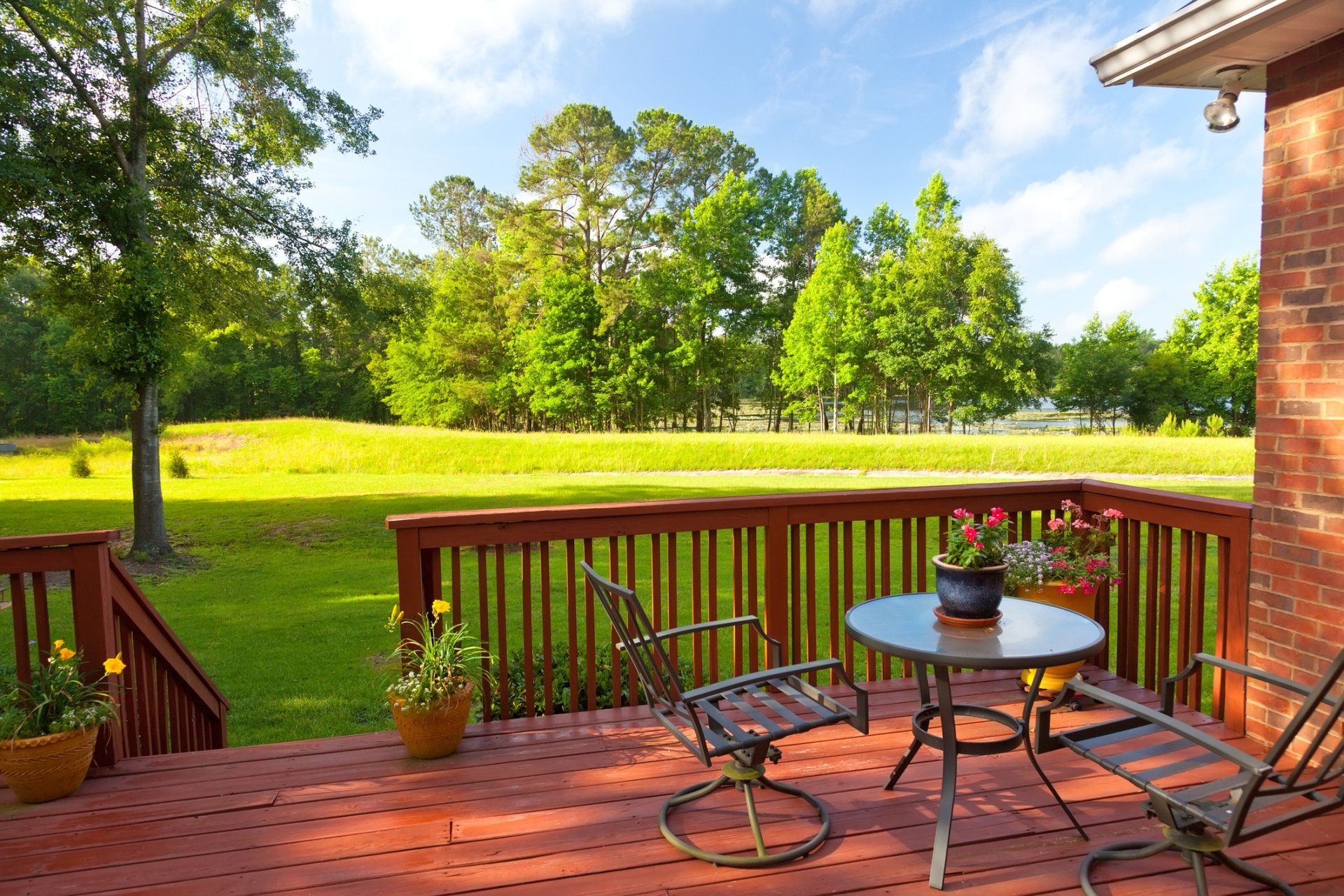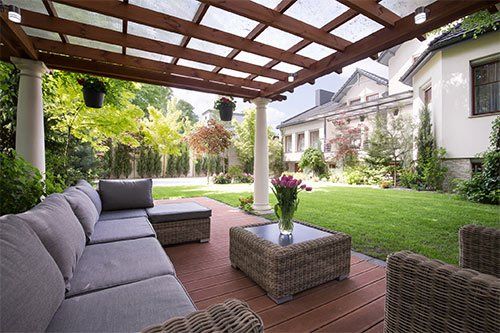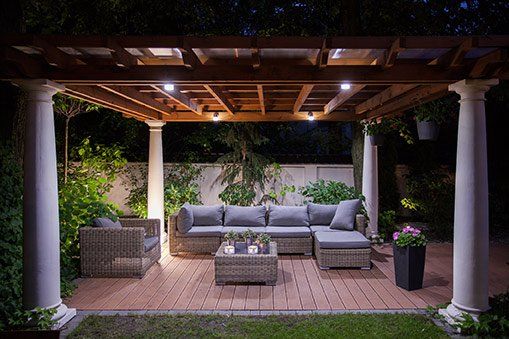A hot tub can serve as motivation for you and your family to spend more time outdoors and helps you relax after a hard day's work. However, the filled tub can weigh thousands of pounds, adding a lot of strain to a deck that is above the ground. If you don't want to stick with a patio or poured slab, you'll need to design your new deck around the demands of the hot tub.
Keep a few basic requirements in mind when choosing a deck to go with your new outdoor water feature.
Weight Support
Start by calculating the weight requirement for support of the hot tub. After you've chosen a specific hot tub model, ask the manufacturer for its filled and unfilled total weight. The filled total weight is the amount needed for the deck builder to design the right trusses and supports. You still want to know the unfilled weight so you can prepare for delivery and installation.
If you don't want to design the deck to support the entire weight of a filled tub, you can support it separately with a concrete slab and just build the deck around the hot tub. You can simplify the challenge of this process by framing the tub separately from the deck with its own posts and piers. Service Access
As you consider the placement of the hot tub on your new deck, avoid arrangements that leave the tub too close to any one of the edges, walls, or railings. Hot tubs need a minimum of 18 inches of access around all four sides so repair technicians can replace fuses, service the heating elements, and clean out debris from clogged jets.
Some hot tub models are carefully designed so that only one or two sides require access for maintenance. Unless you're buying a model that is specifically approved for enclosed installation, assume that you'll need access to all four sides. Moisture Resistance
Any deck lacking a roof must withstand plenty of moisture exposure due to rain, but a hot tub increases the chances of water damage with the wrong kind of decking. Cedar is one of the most rot-resistant natural wood options, and the chlorine content of the hot tub water won't affect the wood's longevity.
Composite decking is another good choice for high rot resistance. The use of polymers prevents the decking from absorbing water as you splash around in the tub. If you choose a natural wood with a lower natural rot resistance, regularly stain and seal it to protect the surface. Partial Drop
With care, you can install a hot tub built in to a raised surface like a deck. However, you should avoid completely installing a hot tub at deck level and leave at least half of the tub's height above the surface of the deck. If you install a hot tub at the same level as the surface of the deck, its placement can create safety risks for people and pets, even when the cover is obscuring the water.
A hot tub at least 18 inches high helps you avoid tripping into the water. Most people also find this height makes access easier. With the tub edge at your natural hip height, you can easily climb in and out without stretching or slipping. Deck Cover
Hot tub covers keep leaves and curious squirrels out of the water, but structural additions to the deck can help even more. Deck covers and similar awnings keep snow and water from damaging your hot tub. A deck cover also helps the deck look new for a longer time and can extend the lifespan of stain and sealant.
Design a deck with a hot tub as the centerpiece by discussing your ideas with us here at Superior Outdoor Designs. Partner up with us for a deck that can handle the weight and spilled water that comes with a hot tub.
